Day 01: Arrival Paro - Thimphu
The most spectacular mountain flights you will ever experience in a life time. Flying in from the heat of the plains of India one can witness from the left side of the aircrafts window a series of the world’s highest peaks. Your pilot will announce the names of the peaks if the weather is clear. You will descend into the high mountains and as the plane lowers you will not find any airstrip or any city but instead you will enjoy the view of the approaching valley of Paro, the alpine forests, little monasteries, temples and farm houses. Before the plane touches the runaway you will get a glimpse of the fertile valley of Paro, the Paro Dzong (Fortress) and Paro chu (river). Our representative will be at the airport to assist you and meet. And transfer to Thimphu. Evening visit Tashichoe Dzong (Fortress of Glorious Religion). Overnight at the hotel in Thimphu.
Day 02: Thimphu sightseeing.
Thimphu sightseeing includes the following:
After breakfast you will be transfer to the following places. And lunch will be served.
- Visit King's Memorial Chorten (Stupa). This Stupa was built in the memory of our Third King of Bhutan.
- Buddha Point (There is a statue of Buddha which is 169 feet).
- National Library - There are lots of Bhutanese scripts and also we have the biggest book in the world.
- Handmade Paper Factory - The Jungshi handmade paper factory uses traditional methods to produce the authentic Bhutanese paper known as Deh-sho. It is located approximately 1 km from Thimphu City. The factory uses the bark of two tree species, the Daphne tree and Dhekap tree in the manufacture of traditional paper. Visitors can observe the entire process of producing handmade paper using ancient traditional methods that have been practiced for generations. You can even try your hand at this ancient craft and make some paper of your very own as a souvenir. Deh-sho paper was originally used by monasteries for woodblock and manuscript books and also for writing prayer books.
- Zilukha Nunnery - Zilukha nunnery in Drubthob Goemba,Thimphu is biggest nunnery in Bhutan. The Nunnery and Goemba once it belonged to the Drubthob (Realized one) Thang Thong Gyalpo often referred to as The King of the open field. In the early 15th century with his multiple talents he popularly became the Leonardo da Vinci of the Great Himalayas. It is located above Tashichhoedzong(2 KM drive from the Dzong). The Zhilukha Nunnery is overlooking the Tashichhoedzong or Thimpu Dzong. You can see many nuns chanting prayers and turning prayer wheels in Zhlukha nunnery. In the same compound there is one-storey building which is serving as sleeping quarters. You can see views of golf course and other side of Thimphu valley. In Bhutan girls and women are admitted to nunneries for short to long period of time. From the nunnery they get an education. Finally they dedicate their lives to serve the society. These nuns are very much involved in local communities in Bhutan and helping needy families.
- Takin Preservation Centre (contains national animal takin). Evening at leisure or take a walk to the main city from Clock tower square for shopping. It provides excellent opportunity to mingle with local people. Overnight at the hotel in Thimphu.
Day 03: Thimphu-Punakha
Morning drive to low lands of Punakha valley touching Dochula pass 3,100 m and on the stop at Hongtsho village. Stop at the immigration check point to stamp in your permit. Next to the check point you will find small local stalls selling fresh juicy local apples available for sale in plastic bags you could try some. You will be driving through the first mountain pass in the western part of Bhutan. You will find the 108 Druk Wangyal chortens on the top of the pass where the ridges are draped in colourful prayer flags greet you. You could take three rounds and offer prayers, take some best photo shots.
If the weather is clear you will be able to see the highest peaks towards the north, Gangar Punsum among others is the highest unclimbed peak (24,000 ft) in the world.. If you are lucky you could see red pandas, different species of birds, you can take some photo shot close to the natural lake. Proceed down towards Punakha through Thinleygang village and upon reaching Lobesa turn left and enter Punakha valley.
On the way have Lunch at Lobesa and take a hike to Chimi Lhakhang (Temple). This monastery is dedicated to Lama Drukpa Kunley” Divine Madman” known for his outrageous behavior. It was built in 1499 by Ngawng Chogyal the, 14
th Drukpa Hierarch. Many childless women visit this lhakhang (Temple) and seek blessings for a child.
The existing footpath to Chimi Lhakhang (Temple) passes through beautiful terraces of paddy filed after crossing paddy field. You will come across a Lobesa Village with lots of traditional house. Lobesa Village is situated in valley, surrounded by paddy fields on the way to important Buddhist Shrine “Chimi Lhakhang” in Punakha.
You can very well interact with local people and here also, you can visit some village houses to understand about their life style and proceed towards Chimi Lhakhang (Temple). Drive to Punakha. Overnight at a Hotel in Punakha.
Day 04: Punakha (Hike)
Morning we will visit beautiful nunnery built on the hill top of Walakha, join the nuns for morning prayer and later on drive further north of Punakha to visit one of the beautiful Stupa or Temple built on ridge near the Punakha river known as Khamsum Yuelley Namgyel Chorten which will take around 30 minutes to reach from the town. It was built in honour for then Crown Prince Jigme Kheser Namgyel Wangchuk which was built in 1990s and took period of nearly 10 years. From the parking, it will take another 45 minutes uphill hike to reach crossing through rice suspension bridge and rice field and return portion downhill takes around 30 minutes.
Overnight at a hotel in Punakha
Day 05: Punakha – Trongsa
Morning transfer to Trongsa via Wangdi we drive uphill towards Pela La Pass crossing the Black Mountains that divides western and central Bhutan. The roads uphill is pretty curving with sharp bends but you need not worry as our drivers are well experienced and on the way you will find rhododendron, magnolias and yaks grazing and on clear days you will find the Mt. Jumolhari standing still towards the west, at an elevation of 23,685feet. Before arriving to Trongsa you will pass by Nikkarchu Bridge and here you will find white washed stone chorten built in Nepalese style in the 18th century which lies below the road. This temple was founded by a lama called Shida who subdued a demon that was a trouble to the valley. Here you will experience something interesting as you will be approaching Trongsa where from the road you will be able to view the massive Trongsa Dzong also known as "the never reaching Trongsa Dzong. this place used to be the old gateway between the east and west. If you have time you could visit the Trongsa Dzong and Ta Dzong (Ta means watch tower in Dzongkha) was built in 1652 and now it is a museum which displays Buddhist art and the history of our Monarchy. Overnight at Trongsa.
Day 06: Trongsa – Bumthang
Post breakfast, we will drive you towards Bumthang. Bumthang valley is very open and spacious which is different from other valleys in Bhutan, its altitude ranges from 2,600 meters (8530ft) to 4000 meters (13,125 ft).Bumthang is known as heaven for hikers and trekkers and you will come across many beautiful monasteries, also important Buddhist monasteries and pilgrimage sites. This valley is full of surprises and fascinating as almost every valley or hill has a background of interesting myths and legends about kings, Buddhist masters and serpents. This place is important in terms of religious relics left by the famous Guru Rinpoche and his reincarnation.
Morning visit Jakar Dzong founded by a white bird built on a ridge overlooks the valley. The Kurjey Lhakhang where the kings of Bhutan are taken for their cremation rites. Kurjey translates into “Kur” means body and “Jey “means Lhakhang. The big cypress tree is believed to be the walking stick of Guru Rimpoche. The great Guru also created a holy water hole beside the temple which people frequent either for religious or medical purposes. Wangdicholing Palace – built during the times of the first king’s father, Jigme Namgyel was used by the first King Ugyen Wangchuk as his main residence. Visit the town or take a walk till the bridge though the township was burnt down by fire in recent times. If you are a cheese and honey lover you could try the Bumthang cheese which is available and honey produced in Bumthang. Evening at leisure. O/n at Bumthang.
Day 07: Ura Valley Excursion
Beautiful Ura valley is located on the way to eastern Bhutan with incredible community and amazing valley. It is also the most beautiful valley within Bumthang district with traditional and well preserved cultures and traditions. On the visit also visit Mebartsho also referred as
“The Burning Lake” it’s believed to be one of most sacred religious sites in Bhutan. During the time of tertoen (Treasure Discoverer) Pema Lingpa it’s said that he discovered the hidden treasure of Guru Padmashambava from that lake with lamp burning on his hand. Overnight at a hotel in Bumthang.
Day 08: Bumthang – Tashigang
Post breakfast, we will be driven towards Tashigang and Overnight in a Hotel in Tashigang.
Day 09: Tashigang (Sightseeing).
Post breakfast, we will visit
Rangjung Lhakhang
Further east from Trashigang, driving north will take you to another commercial hub in Trashigang, the Rangjung town. This once sleepy town is today a major commercial center where people from five gewogs congregate and carry out brisk businesses. Besides the town one can visit the Rangjung temple located on a small hillock overlooking the town. The temple built in the architectural style of the Tibetans has a monastic school supported by HH Garab Rinpoche. Namdru Choling lhakhang An hour’s drive from the Rangjung town will take you to Phongmey a quiet but a quaint village through the rice fields. At the end of the road is the Namdu Choling lhakhang widely known as the Phongmey lhakhang. Built in the late 1890’s this lhakhang serves the spiritual needs of the village. Opposite the lhakhang across the Gamri Chu river is the abode of the local deity Meme Ralang where one can see hermitages on its top.
Later, you will take you to witness
Tashigang Tsechu (27th Nov – 29th Nov, 2017). The annual Trashigang Tshechu is one of the biggest festivals in eastern Bhutan. People from all over eastern Bhutan come to the festival. The nomadic community of Merak and Sakteng, called the Brokpas, stand out of the crowd with their unique dress and appearance. Different sacred mask dances are performed during the festival apart from other traditional folk songs and dances.
The highlight of the festival is the unfurling of the thongdrel (large tapestry) of Guru Tshengyed (eight manifestation of Guru Rinpoche). Another Thongdrol of Neten Chudrug (Sixteen Arhats) is also unfurled for the public. Overnight in a hotel in Tashigang.
Day 10: Tashigang– Gangtey
Post breakfast, we will drive you back to Gangtey and overnight in a Hotel in Gangtey.
Day 11: Gangtey (Sightseeing)
After breakfast you will visit Gangtey Monastery or the Gangtey Goempa is an important monastery / temple associate with the Nyingmapa school of Buddhism. The Monastery is Located in the Wandue Phodrang Dzhongkhag in central Bhutan. The Gangtey Monastery is situate in the picturesque Phobjikha Valley, which is also renowned for being the winter home of the rare Tibetan Black Necked Cranes. The monastery was established in 1613 by Peling Gyalse Rinpoche, the grandson of Trenton Pema Lingpa the great treasurer discoverer.
According to a story during a visit to the Phobjikha Valley, Trenton Pema Lingpa foretold the people that one day his descendants will construct a monastery on the hills surrounding the valley and make it the seat of the Peling Tradition. The present ruling dynasty of Bhutan is descendant of the great Trenton Pema Lingpa. The monastery is a complex of five temples that surround a main central tower. The main hall of the monastery is built in Tibetan style architecture and is made completely out of wood with its 8 main wooden pillars considered to be the largest in Bhutan. Between 2002 and 2008 the monastery underwent a complete renovation / restoration.The monastery was consecrated by the present day reincarnation of the Pema Lingpa in October 2008. The monastery has a very close connection to the royal family of Bhutan.
Phobjikha valley The Phobjikha is a wide glacial valley located in close to the Gangtey Monastery.
The Phobjikha valley is the winter home of the rare Black Necked Cranes that migrate from Tibet from the arid plains of Tibet to roost in the more comfortable climate of the Phobjikha Valley. The valley is at an altitude of 2900 meters above sea level and experiences a much lighter winter as compared to the harsh extremes of Tibet. A part of the valley lies in the Black Mountain National Park. There are 2 rivers that flow through this valley called the Nakay Chu and the Gay Chu. According to legend it is said that the rivers represent a serpent and a boar. Once upon a time there was a race between the two to determine wether people can grow rice in the valley or not, if the serpent won then the people of the valley could grow rice but if the boar won, then rice could never be cultivated in the area.
Eventually the serpent lost and till date rice is not grown in the Phobjikha Valley. While visiting the Phobjikha Valley one must take time out to visit the Black Necked Crane Information Centre, the centre is located at the edge of the main forest are along the road and can be easily accessed. The centre has an observation deck that is equipped with a high power telescope that gives visitors a chance to spot some cranes. The Information Center has a display that offers an insight in to the natural and cultural history of the valley. Overnight in a Hotel in Gangtey.
Day 12: Gangtey – Paro
Drive back to Paro. Overnight at a hotel in Paro
Day 13 Drive back to Paro
Morning visit Lhakhang (temple) Karpo also known as the white temple believed to be constructed in 7
th century by Tibetan king Songtsen Gempo in his mission to built 108 temples throughout Tibet, Ladakh and Bhutan. Then drive to Paro, after lunch visit
Rinpung Dzong is a large
dzong -
Buddhist monastery and fortress - of the
Drukpa Lineage of the
Kagyu school in
Paro District in
Bhutan. It houses the district Monastic Body and government administrative offices of Paro Dzongkhag.
Kichu Lhakhang - The Jowo Temple of Kyichu is one of the oldest temples in Bhutan, originally built in the 7th century by the Tibetan Emperor
Songtsän Gampo. It is considered to be one of the 108 border taming temples he built.
Taktshang (Tiger’s Nest) falls in top 20 places to visit in the world. Paro is a valley of religion and myth. The most famous landmark, Taktsang Monastery (Tiger’s Nest), stands on a granite cliff about 1000 m above the valley.
It is believed that Guru Rinpoche, a famous Buddhist saint, flew to Paro on a tigress and meditated at Taktsang. The monastery is considered a national treasure of Bhutan.
The hike to Taktsang would take us around 2 ½ hrs to reach a cafeteria, a point from where one can enjoy great view of the monastery. Those interested can walk further 45 minutes uphill to get a closer view of the monastery. Walk down back to road. The journey downward to the road would take us less 1 ½ hrs. Have lunch in Hotel. After lunch take a walk in Paro Bazar for shoping. Overnight at the Hotel in Paro.
Day 15: Departure
After Breakfast drive back to Paro International Airport. Bhutan Buddha escort will help you with exit formalities and then bid you farewell.

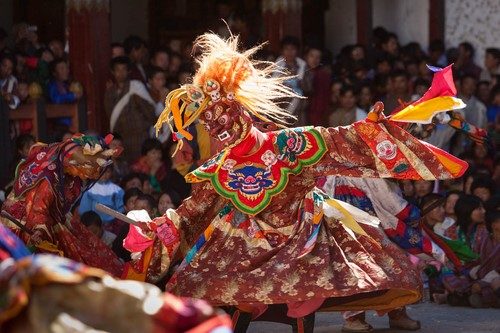





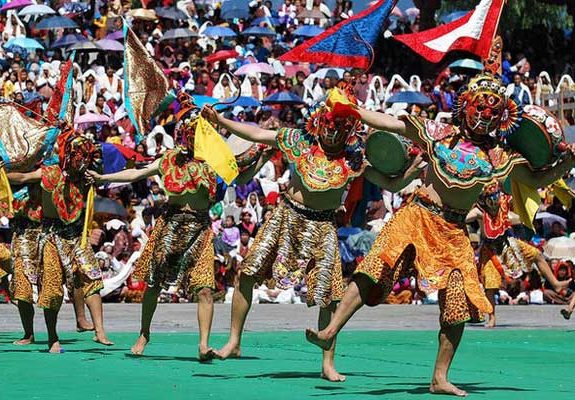
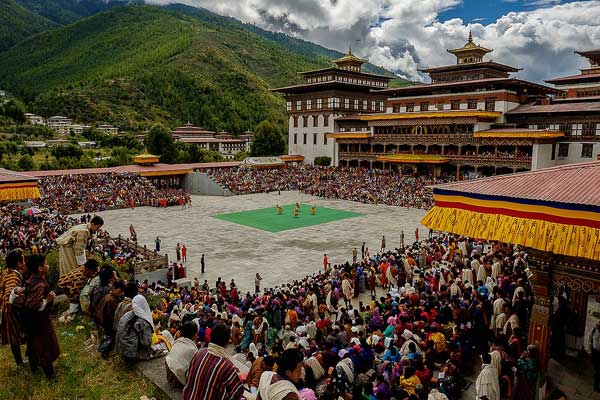
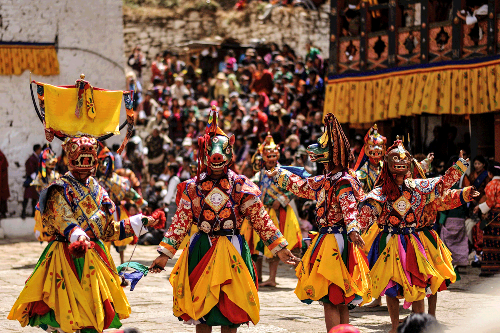
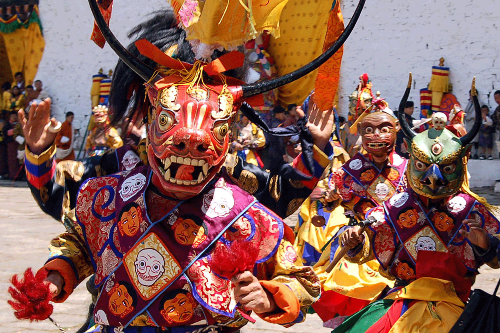
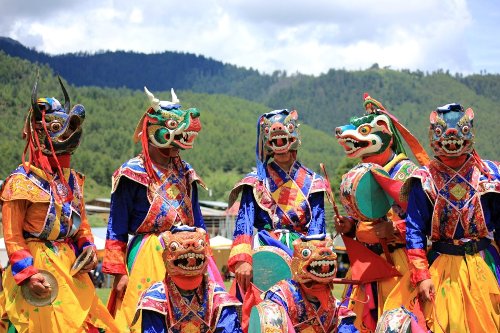
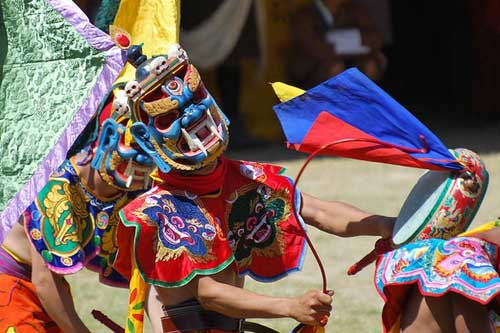
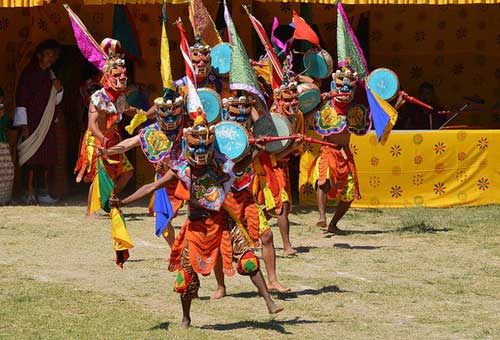
Reviews
There are no reviews yet.